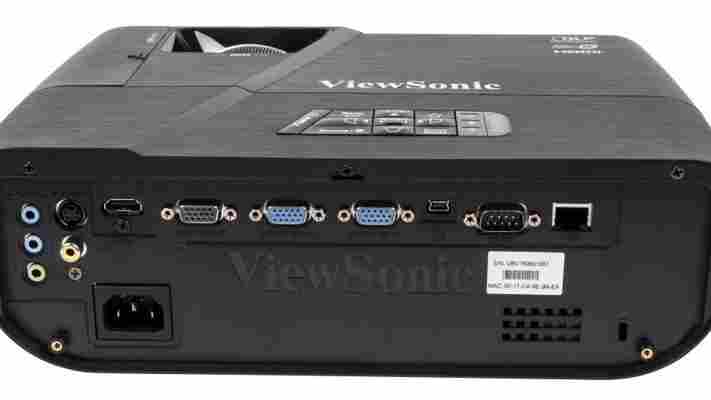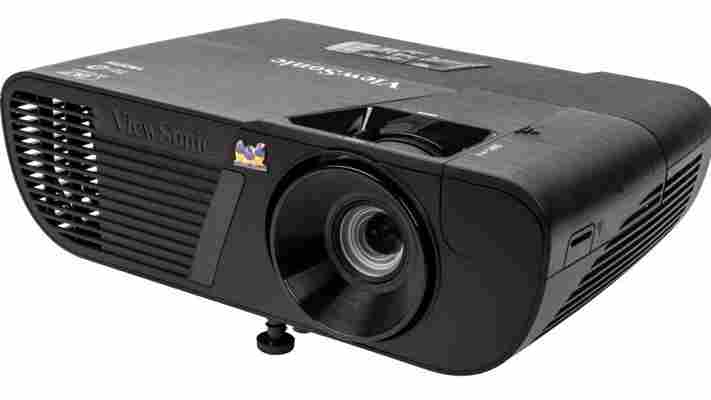March 07,2023
ViewSonic PJD6352 review
by Jennifer Cameron inMediterranean Style
This compact office projector is suitable for smaller rooms and temporary installations. Its compact 316x228x104mm dimensions and 2.2kg weight are a key strength, making it refreshingly portable for taking on the move.
The PJD6352 is best described as plain and inoffensive, with brushed black plastic making up the bulk of the chassis. The manual focus and 1.51-1.97m throw adjustment wheels let you get a large, in-focus image from a distance of around two metres. Vertical and horizontal and vertical keystone adjustment and a height adjustable foot on the front make it easy to set up a perfect, rectangular projection without too much effort, although digital keystone will degrade the picture compared to setting the projector directly face-on with your projection surface.
Buttons on the top of the projector cover basic functions including keystone and colour adjustment, and there's a small remote control with buttons for freezing the screen, accessing the menus and changing source. As long as your smartphone is connected to the same network as the projector, which must be plugged in using the LAN port, you can also control it using the vRemote app for Android and iOS. By default the projector picks its own static IP address, but this caused problems for us so we set it to DCHP, allowing the router to decide what the projector's IP address would be. Once connected, the app allows you to make changes as if you were using the remote control.
Two VGA inputs and one output, two HDMI ports, one of which supports MHL for mirroring a smartphone or tablet onto the projector, S-Video and composite video inputs, two 3.5mm audio inputs and a single 3.5mm output should be more than enough for connecting your devices, no matter how old they are. There's also a serial port, LAN connector and a mini USB port for controlling presentations using buttons on the remote control.

The MHL port is hidden behind a panel on the side of the projector, which also has space for the optional WPG-370 wireless dongle. It costs £149, making it an expensive extra, but lets you project from PCs, laptops and handhelds wirelessly using Miracast.
Image quality
The PJD6352 uses DLP projection, which relies on a spinning colour wheel in order to project colour images. The lamp is bright enough for daylight use at 3,500 lumens, and with the lights switched off images look brilliantly bright and vibrant, with crisp colours and inky text giving otherwise boring presentations a better chance of being noticed by colleagues. The 4:3 aspect ratio projection is good enough for presentations and documents, but less so for widescreen aspect video. Resolution is also disappointingly low for the price, at a lowly 1,024x768.
Of the five colour modes available, including Standard, ViewMatch, Dynamic, Movie and Brightest, we found Dynamic produced the most natural colours. It also adapted for when the screen was filled with bright whites that could dazzle some onlookers. We'd suggest avoiding Brightest and Standard, as these give colours a strange, slightly filtered look that appears unnatural and not particularly pleasant. Movie mode dims things slightly and adds a slightly blue tint, but the effect was subtle. The 2,400:1 native contrast ratio was good enough to show off most of our test images, although those with very dark areas did become fairly hard to view.
There's no frame interpolation when watching videos, meaning rapid vertical and horizontal movement results in some juddering. This isn't a major gripe if the PJD6352 will be relegated to office work, but annoying if you want a projector to do double duty for home cinema.

